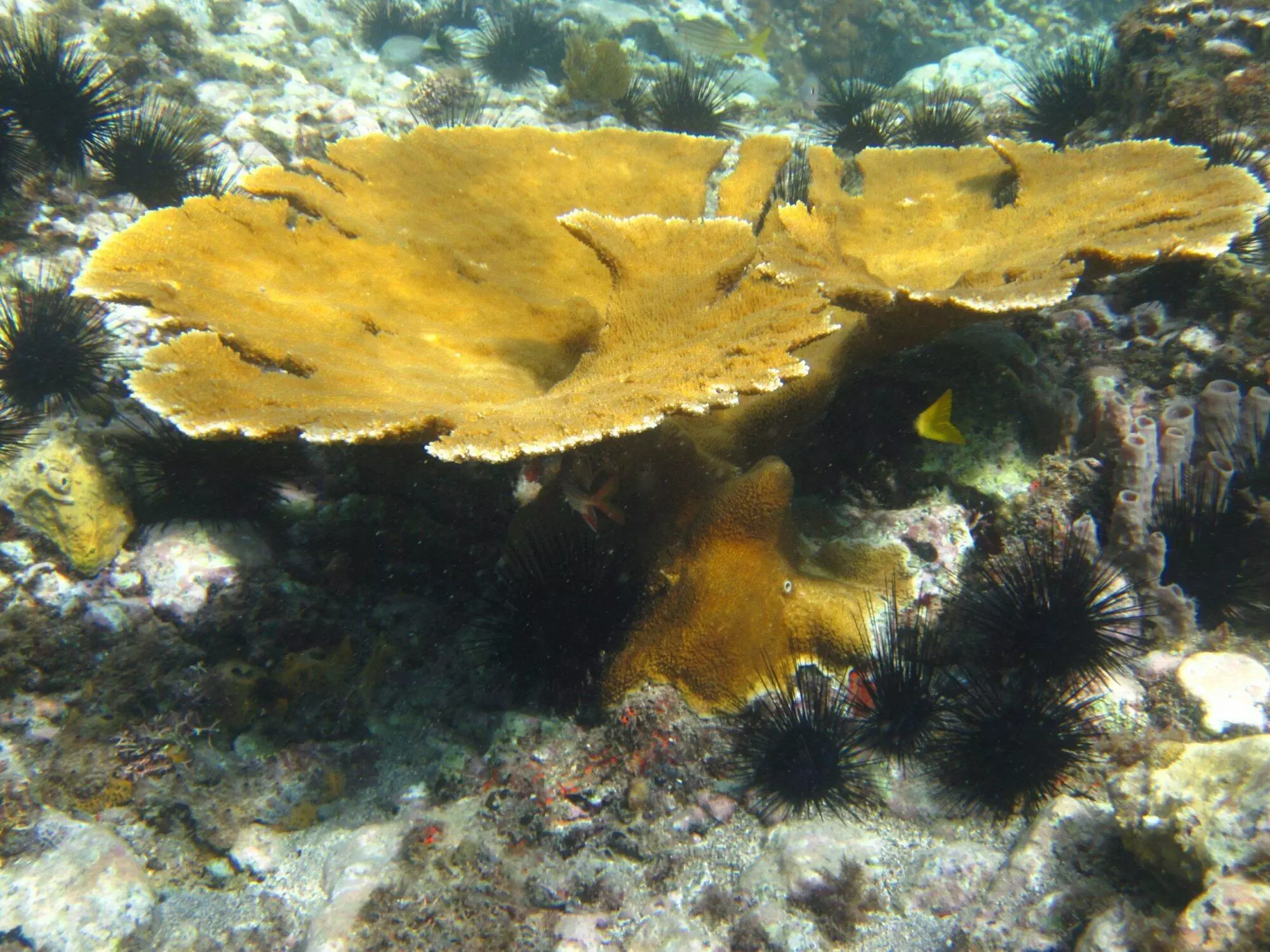
Coral is an animal made up of a colony of polyps: a body with a single orifice (oral and anal), surrounded by tentacles. Hard corals are “reef builders” because they build a calcareous exoskeleton. Coral reefs were formed by the accumulation of these skeletons. Great barrier reefs are one of the largest structures created by living organisms.
Corals are the main constituents of coral reefs. They require very strict living conditions to enable their development:
– Warm water (between 24˚C and 29˚C),
– Clear water (to allow light to pass through),
– Well-oxygenated, fairly agitated water with sufficient salinity (optimum 36‰).
The presence of the Corne d’Élan coral is a sign of good reef health. Indeed, the latter almost disappeared.
The location or shape of corals on the reef is determined by the swell. The strongest corals are on the front line, where the offshore waves break. The weakest corals are at the back of the reef.
It’s this coral reef that protects the coast from offshore swell, and enables seagrass beds and mangroves to thrive.
Fire coral should never be touched, as its tentacles contain highly stinging cells that burn.
Corals feed in two ways:
Certain environmental changes (temperature rise, desalination, storms…) create stress for the coral, which expels the micro-algae it hosts and which provide much of its food and color (photosynthetic pigments). Discolored and weakened, the coral often ends up dying, covered by its most fervent competitors: algae (which are not invasive, as they are present in the natural environment).
In Martinique, corals have suffered greatly from bleaching (rise in water temperature in 2005) and physical destruction (cyclone DEAN 2007).
Stakeholders in Martinique’s marine environment meet regularly under the auspices of the French Coral Reef Initiative (IFRECOR) to draw up an action plan for the protection and sustainable management of coral reefs and associated ecosystems (mangroves, seagrass beds) in the French overseas collectivities.
Corals reproduce in two ways:
Gorgonians are flexible corals (protein skeleton) attached to rocks. They provide refuge for reef fish. Martinique has 35 species of gorgonian: sea feather, sea whip, fan…
Gorgonians are very fragile and vulnerable to epidemics, storms and fishing. So be careful when observing them, and keep your distance.
It’s a magnificent sight to contemplate the ballet of the Fan Gorgonians, dancing to the rhythm of the swell. They are the food of choice for the Caribbean Mint, a species of gastropod mollusc that consumes their polyps bit by bit.
Avoid buying jewelry made from gorgonian sea fans, as this may encourage their collection.
The sponge is a primitive animal, made up of non-specialized tissues (no nervous system, arms, etc.). It feeds by filtering seawater 24 hours a day, and can process 7,000 times its volume of water per day. It serves as food for Angel Fish, Hawksbill Turtles and Nudibranchs.
The sponge is the animal with the greatest capacity for regeneration: even if crushed, cut or crunched, the different pieces heal and continue to grow on their own, forming a new sponge.
To form their skeletons and protect themselves from predators, some sponges have spicules (tiny needles), while others produce organic compounds that give them a bad taste.
The barrel sponge can measure over 2 meters in length, and such a specimen can be over 100 years old.
Chat with us directly from WhatsApp